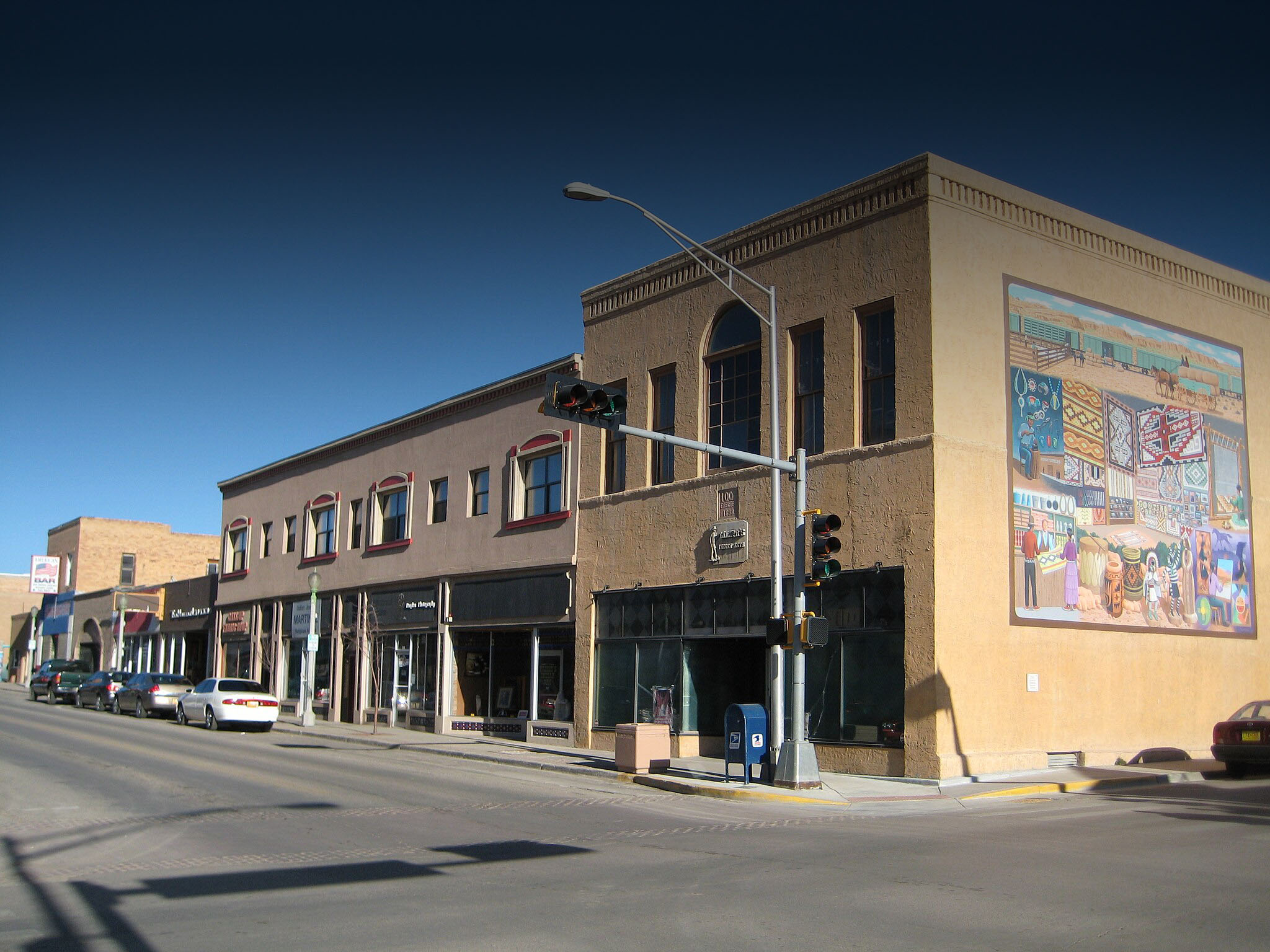Railfans cross an ocean to photograph BNSF trains
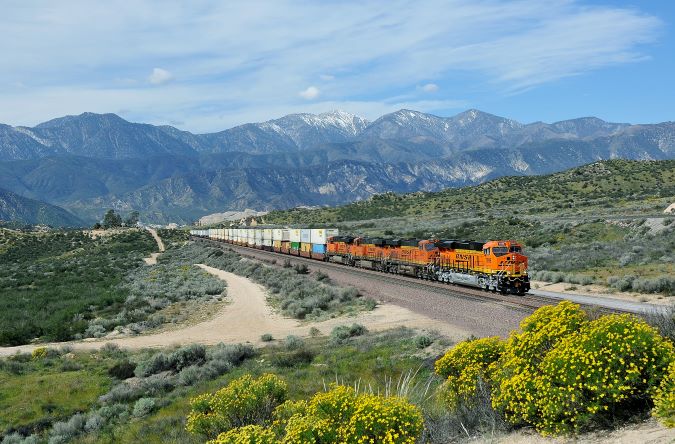
After railfan Pierre Julien and two friends traveled from France to take a trip along historic Route 66 and photograph BNSF trains, the people, landscapes and experiences along the route are indelibly etched in his memory – and photos of the adventure help him relive it.
“For as long as I can remember, I have always dreamed of the wide-open spaces of the American West,” Julien said of his two-week trip. “Two good friends of mine, both amateur photographers like me, came up with the idea and established an itinerary having already traveled there a few times.”
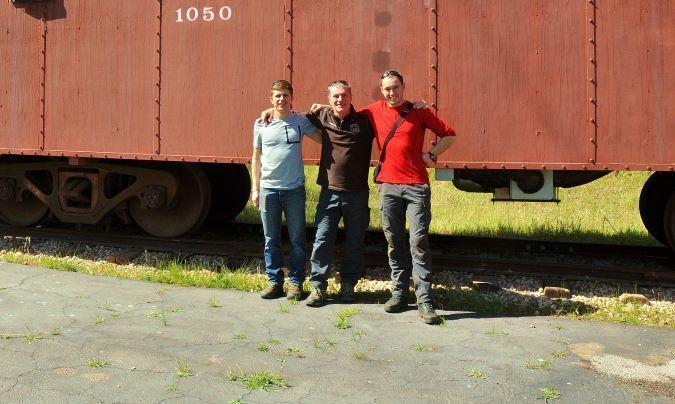
Those two – Remi Daugeron and Delff Dumont – are both locomotive engineers in France. While Julien dreamed of being an engineer, he has a vision restriction. “Instead, I worked with disabled children – first children with behavioral issues, then youngsters with visual impairment,” he said. “But I have always been involved in the railroad world through model railroading and photography, which I have been practicing for 50 years.”
For Julien’s 66th birthday, his friends and family surprised him with “Lyon-Paris-Los Angeles” plane tickets.

“Route 66 has always been a dream of mine. It’s a mythical road that follows the great transcontinental line used by BNSF trains,” he said. “It goes through the West, which I discovered in the Westerns I watched as a child and teenager, and that prompted me to find out more about these wide-open spaces.”
The friends traveled in March, when the temperature in the deserts is bearable and they could comfortably discover the geographic wonders of the region: Arizona’s Grand Canyon, Meteor Crater and Crozier Canyon; the sandstone reliefs in Cajon, California, and more. “As a geology enthusiast, I was in awe every day, and marveled at nature’s displays of beauty,” Julien recalled.
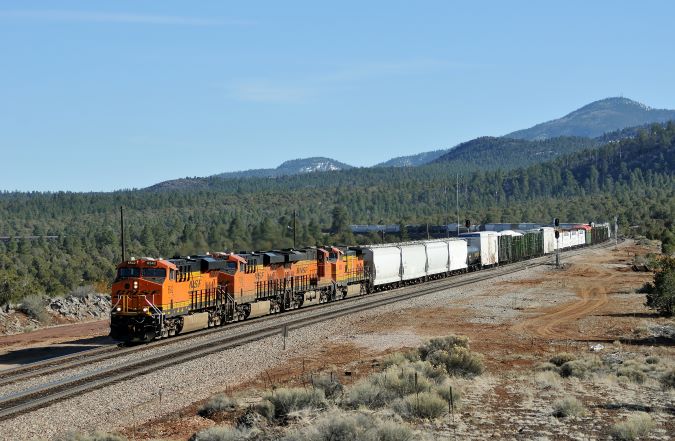
After arriving in Los Angeles, they began their journey in the picturesque Tehachapi Mountains, where a nearly 4,000-foot-long rail loop connects south-central California BNSF trains via trackage rights. Then they headed east, stopping in the California towns Barstow, Siberia, Goffs and Needles, where BNSF’s line cuts through the vast sediments deposited by the Colorado River and a rail viaduct separates California and Arizona.
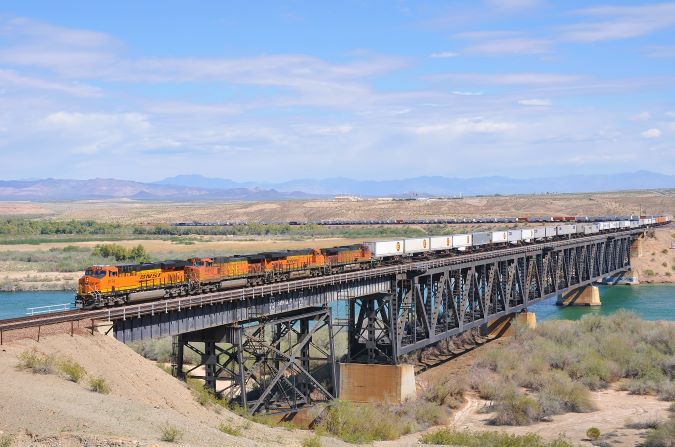
Heading into Arizona, they went to Kingman and saw BNSF predecessor Atchison, Topeka and Santa Fe’s No. 3759 steam locomotive on display. Then they headed to Williams to learn about the different types of equipment used by the Grand Canyon Railway before visiting the famous canyon.

Next, they went to Gallup, New Mexico, where the BNSF line runs alongside high red sandstone cliffs. Here, Julien noted, as the evening light falls, the red rock stands out against the setting sun, providing a beautiful backdrop for the BNSF trains.
Eight days later, turning back west, they stayed near Cajon Pass. “The site is impressive, with so many tracks winding through the mountains,” he said. “The ballet of trains is incessant, and the steep grades make the machines roar – it’s very spectacular.”
The people they met left an imprint on the three. “We met helpful people on our way, whether in supermarkets, shops or motels. One morning, a motorist stopped and asked us if we had broken down and needed some help. We told him we were there to take photos, and we really appreciated his gesture,” Julien said.
Besides the landscapes and the people, he was equally impressed with BNSF.
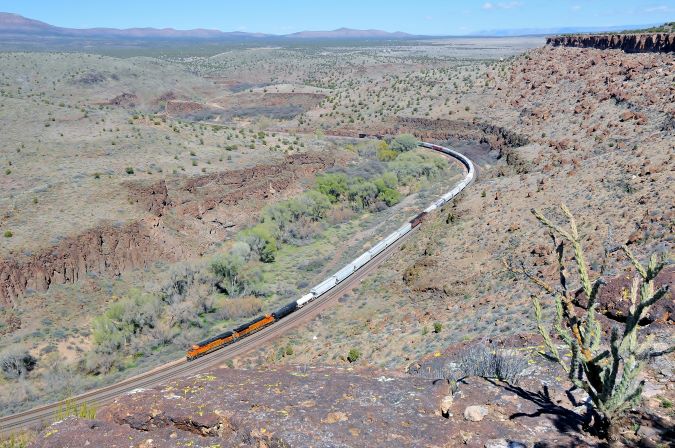
“BNSF is a great company that evokes the great American outdoors, and it contributes to the economy,” he said, noting the major differences between French and American railroads. “In the U.S., trains and locomotives are massive. Trains are much longer, with three or four locomotives at the front, more in the middle and sometimes, as many at the back. In France, there are sometimes double traction and push locomotives on steep mountain lines.
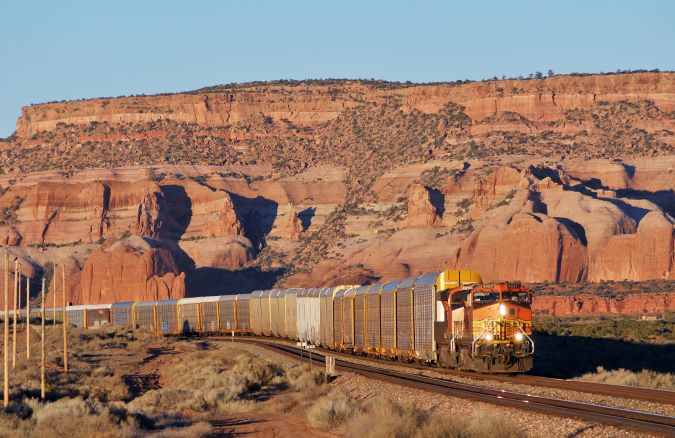
“In the U.S., trains carry large tonnages while in France, there are container trains, but no double-stacks. Our freight cars are attached with very old hooks while yours are all connected with automatic couplings,” he added. “On the other hand, the network is much denser in France, where there are many more passenger trains serving major French cities at speeds of up to 320 km/h (198 mph).”
From magazine articles, his Friends of BNSF membership and memories from his trip, Julien has a sense of what makes BNSF special. “Your employees are strongly committed to their job. Although there are many of you, you form one big family, united and supportive of one another,” he wrote.
Julien hopes to make another journey to the U.S. to again photograph our train operations, possibly see the interior of a locomotive, and revisit the West.

“I never got tired of the wide-open natural spaces,” he said. “I discovered desert flora such as agave, flowering cacti, yucca and the emblematic Joshua trees. The only thing we dreaded was rattlesnakes, but thankfully, we never came across any of them!”

